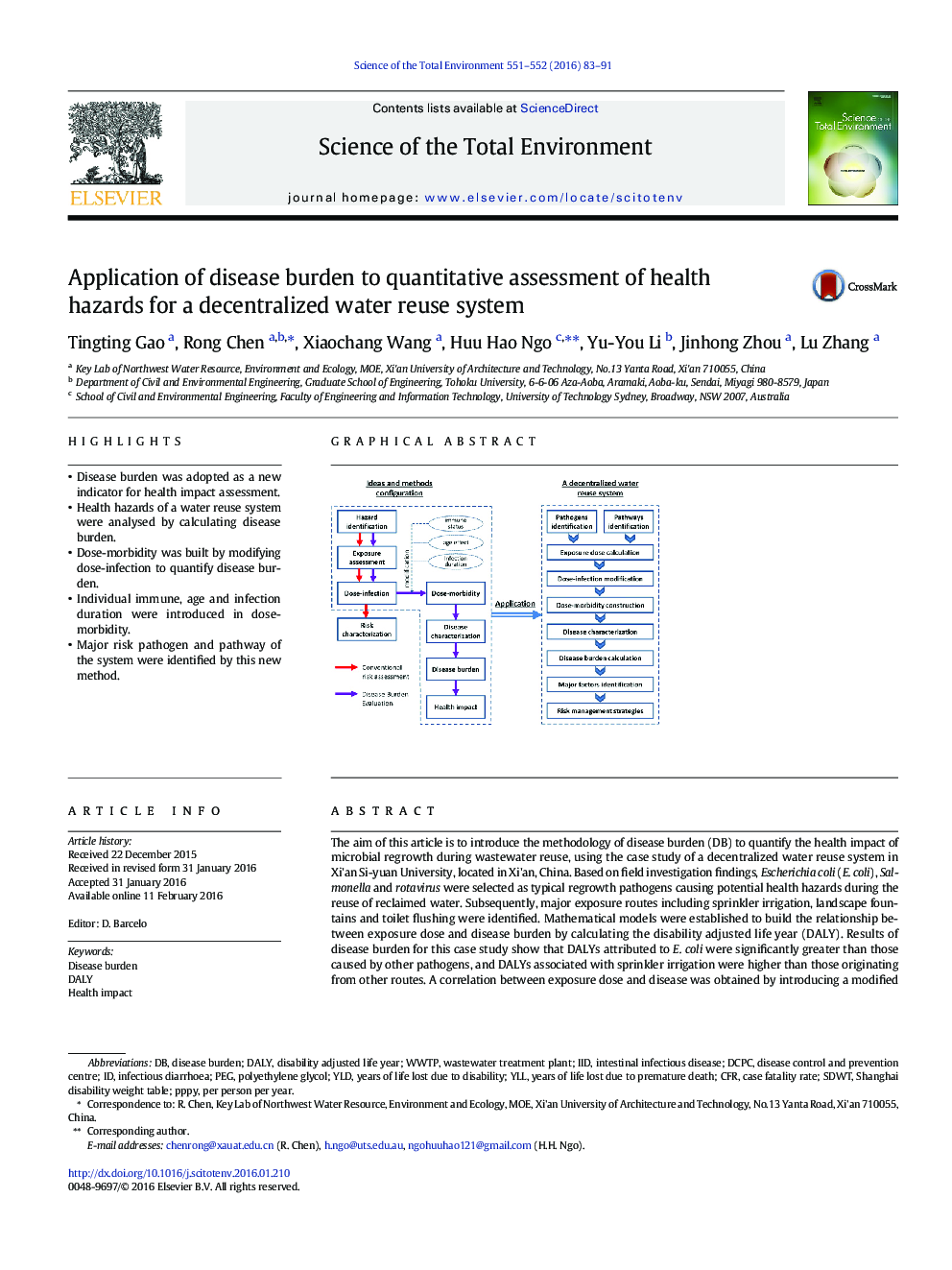| Article ID | Journal | Published Year | Pages | File Type |
|---|---|---|---|---|
| 6323099 | Science of The Total Environment | 2016 | 9 Pages |
â¢Disease burden was adopted as a new indicator for health impact assessment.â¢Health hazards of a water reuse system were analysed by calculating disease burden.â¢Dose-morbidity was built by modifying dose-infection to quantify disease burden.â¢Individual immune, age and infection duration were introduced in dose-morbidity.â¢Major risk pathogen and pathway of the system were identified by this new method.
The aim of this article is to introduce the methodology of disease burden (DB) to quantify the health impact of microbial regrowth during wastewater reuse, using the case study of a decentralized water reuse system in Xi'an Si-yuan University, located in Xi'an, China. Based on field investigation findings, Escherichia coli (E. coli), Salmonella and rotavirus were selected as typical regrowth pathogens causing potential health hazards during the reuse of reclaimed water. Subsequently, major exposure routes including sprinkler irrigation, landscape fountains and toilet flushing were identified. Mathematical models were established to build the relationship between exposure dose and disease burden by calculating the disability adjusted life year (DALY). Results of disease burden for this case study show that DALYs attributed to E. coli were significantly greater than those caused by other pathogens, and DALYs associated with sprinkler irrigation were higher than those originating from other routes. A correlation between exposure dose and disease was obtained by introducing a modified calculation of morbidity, which can extend the assessment endpoint of health risk to disease burden from the conventional infection rate.
Graphical abstractDownload high-res image (238KB)Download full-size image
